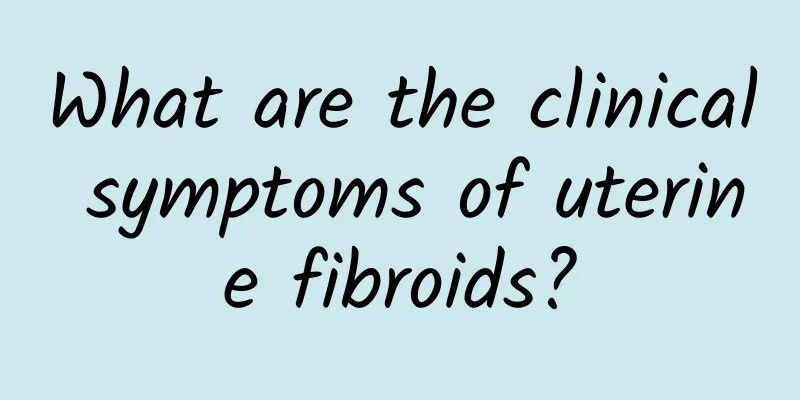What are the clinical symptoms of uterine fibroids?

|
What are the clinical symptoms of uterine fibroids? Uterine fibroids are the most common benign tumors of the female reproductive system. They are formed by the proliferation of smooth muscle tissue and often occur between the ages of 35 and 50. So what are the clinical symptoms of uterine fibroids? Our experts will introduce them to you in detail below. The clinical symptoms of uterine fibroids are: 1. Abdominal mass: The abdomen is swollen, and a mass can be felt in the lower abdomen, accompanied by a feeling of falling. 2. Increased leucorrhea: Increased leucorrhea, sometimes with a large amount of purulent and bloody discharge and necrotic tissue discharge with a foul odor. 3. Infertility: Fibroids compress the fallopian tubes, causing them to twist, or deform the uterine cavity, thus preventing the fertilized egg from implanting, leading to infertility. 4. Secondary anemia: If the patient has excessive menstruation for a long time, it may lead to secondary anemia, with symptoms such as general fatigue, pale complexion, shortness of breath, and palpitations. 5. Menstrual changes: The most common symptom, manifested as shortened menstrual cycle, increased menstrual flow, prolonged menstrual period, irregular vaginal bleeding, etc. 6. Abdominal pain: Generally, patients do not have abdominal pain, but often have lower abdominal distension, back pain, etc. When the pedicle of the subserosal fibroid is twisted, acute abdominal pain may occur. When the fibroid turns red, the abdominal pain is severe and accompanied by fever. 7. Compression symptoms: When the fibroid grows forward or backward, it can compress the bladder, urethra or rectum, causing frequent urination, dysuria, urinary retention or constipation. When the fibroid grows to both sides, it forms a broad ligament fibroid, which compresses the ureter and can cause hydroureteral or renal pelvis; if it compresses the pelvic blood vessels and lymphatic vessels, it can cause lower limb edema. The above is an introduction to the clinical symptoms of uterine fibroids. I believe you have learned something through the expert's introduction. I hope it will be helpful to you. If you have other questions about uterine fibroids, please consult our online experts or call our consultation phone number, and the experts will give you detailed answers. Feihua Health Network wishes you good health! Uterine fibroids http://www..com.cn/fuke/zgjl/ |
<<: What are the causes of uterine fibroids?
>>: What are the specific causes of dysmenorrhea?
Recommend
What soup is good to drink after uterine fibroid surgery? Dietary care methods for uterine fibroids
Uterine fibroids appear as solid spherical masses...
What are the symptoms of cervicitis?
Nowadays, the probability of women suffering from...
Stress causes depression and overeating! Tap 8 parts to relieve stress and massage, help lose weight
Being in an environment of high mental stress, te...
Why is the vulva itchy?
Treatment for vulvar pruritus includes local clea...
Bacterial vaginosis is characterized by recurring attacks, and this is the main reason
Bacterial vaginosis is characterized by recurrenc...
Causes of prolonged menstrual cycles
Causes of prolonged menstrual cycles: The reasons...
Clinical features of cervical precancerous lesions
Cervical precancerous lesions are one of the most...
What medicine can help adults recover faster from influenza?
Adults with influenza can speed up recovery by ta...
Can endometriosis be cured?
Endometriosis is treatable, but it cannot be comp...
Endocrine disorders can easily lead to vulvar leukoplakia
As a very common gynecological disease, vulvar le...
Is hyperprolactinemia dangerous?
What are the hazards of excessive prolactin? The ...
What are the tests for menopause?
After menopause, women often lose their psycholog...
What causes white spots on the vulva during menopause? What causes white discharge from the lower body during menopause?
Menopause is an important transition period for w...
The most common hazards of pelvic inflammatory disease
Pelvic inflammatory disease is a type of gynecolo...
How does Sophora flavescens gel treat cervical erosion? Detailed description of the efficacy of Sophora flavescens gel in treating cervical erosion
Cervical erosion is a common disease among women....









